Take a stroll on the pavements of Gariahat, Hatibagan or Esplanade any time, and you will come across a certain print of outfits standing out. Stalls upon stalls burst with the earthy hues of Ajrakh and Kalamkari prints, their indigos and ochres spilling onto Kolkata’s street fashion. From breezy cotton kurtas, fusion saris and scarves, this ancient old artform has emerged and blended seamlessly into the city’s style narrative.
Once reserved for a few selective shoppers and fashion enthusiasts who frequent boutiques, these block prints and hand-painted designs are now everywhere. They are adored for their comfort, geometry and old-world charm.
Designers based in Kolkata agree that this resurgence is not just any passing trend but a quiet movement that values the heritage dating back millenia.
What is Ajrakh?
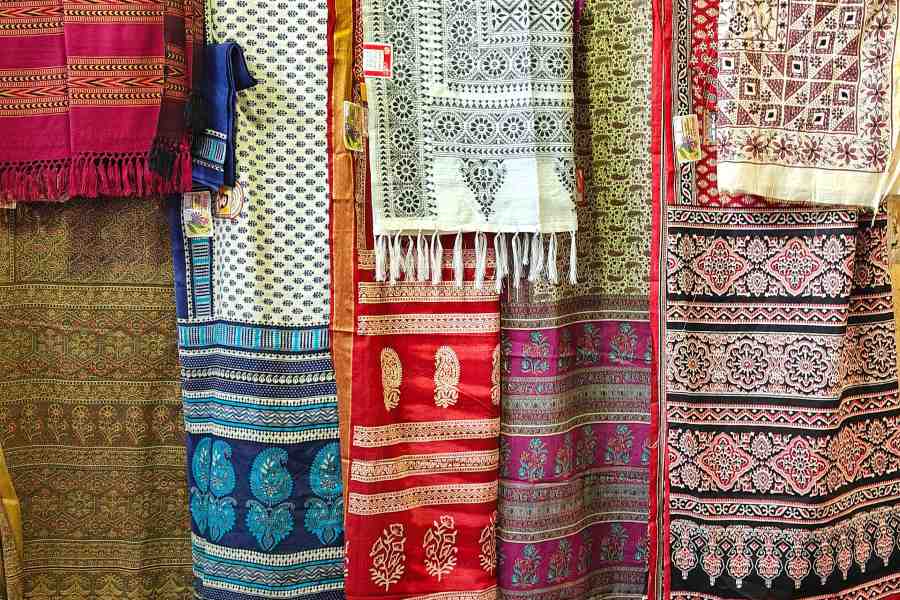
Soumyajit Dey
Ajrakh is an ancient hand-block printing artform that is over 4,000 years old, with its origins tracing back to the Indus Valley Civilisation. The craft was initially developed in the Sindh region (now Pakistan) and later migrated with the Khatri community to the Kutch region of Gujarat and the Barmer area of Rajasthan in India, where it continues to thrive today.
What is Kalamkari?
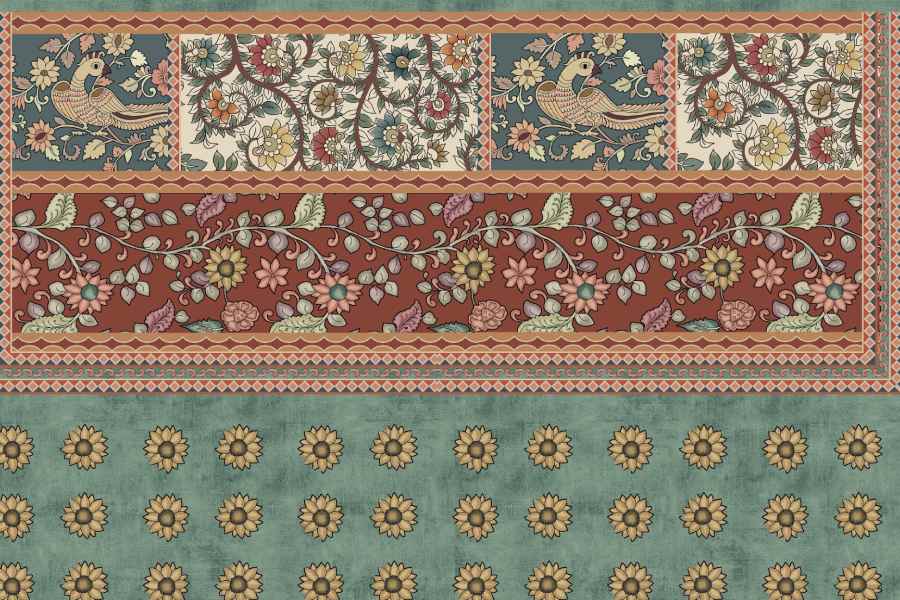
Shutterstock
Designer Abhisek Roy distinguished between authentic Ajrakh and Kalamakari by pointing out that while Ajrakh is prepared with block-prints, Kalamakari is crafted through hand-painted designs. Kalamkari, too, is over 3,000 years old. It was adopted and developed in regions of Andhra Pradesh and Telangana, and was initially used by storytellers to depict mythological scenes on cloth.
The name Kalamkari comes from the Persian words ‘kalam’ (pen) and ‘kari’ (craftsmanship), referring to the hand-painted nature of the art.
Are these prints trending now, or have they had steady popularity?
Sujata Biswas, a fashion designer and co-founder of Suta Bombay, highlights Ajrakh and Kalamkari as two exquisite art forms in India. Initially, these ancient techniques were lesser-known, but with the rising demand for indigenous fashion, they’re gaining popularity. “It is such an exquisite art form, but earlier, there was less awareness. Now, people are getting more and more aware of it, and hence it has become popular,” Biswas said.
Her sentiments were echoed by designer Anushree Ghosh, founder of Maan Calcutta. She said that its popularity has been steady, but the reach is now more widespread due to its comfort, manageability and sustainability. “People are choosing these kinds of fabrics because they are very comfortable. Also, they’re sustainable since buyers are well-versed these days. They know what they are choosing. They know this is a sustainable fabric and also keep the comfort factor in mind, since outfits like silk don’t promise comfort daily, and it might be a hassle to maintain them every day,” Ghosh said.
How to style up with Ajrakh and Kalamkari outfits
Designers agree that it isn’t difficult to style up with Ajrakh and Kalamkari outfits. “It’s such a quintessential, age-old classic — you don’t have to do much with it, but you can always layer it with something simple, like a bold, solid colour,” said Sujata Biswas.
Ajrakh
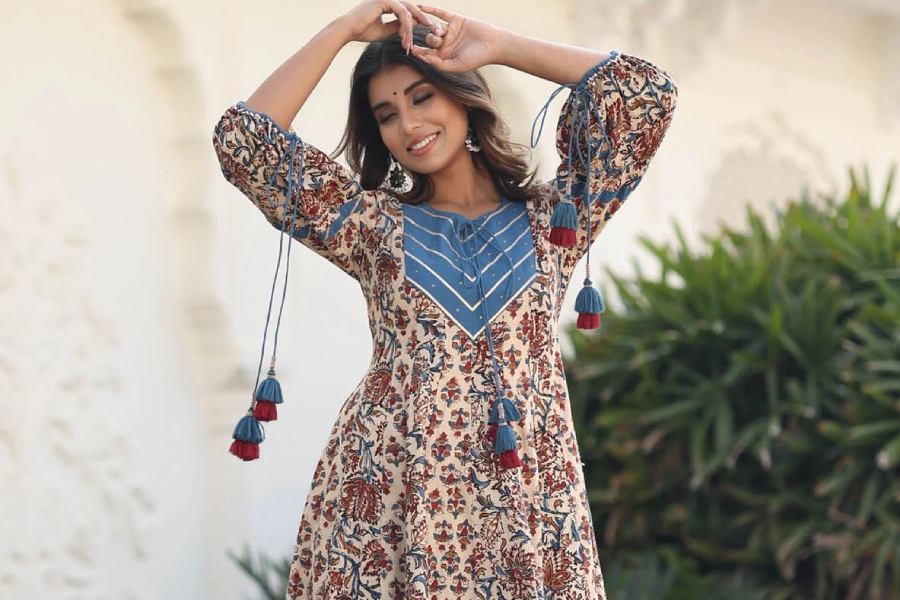
Irya Ajrakh Print Paneled & Flared Dress by Mulmul
This print stands out in its deep indigo tones and geometrical symmetry — seen on kurtas, scarves, dupatta and fusion saris paired with denim blouses or cotton palazzos. Its versatility makes it a favourite among those who love a touch of tradition without depleting the urban edge.
Kalamkari

Stylish Kalamkari embroidered top with tie-ups by Sujatra
Kalamkari, on the other hand, can be styled up with breezy traditional prints paired with co-ord sets or cotton saris paired with silver and oxidised jewellery. Whether layered as Kalamkari jackets over linen dresses or draped as a dupatta on a solid kurta, Kalamkari adds an effortless, earthy charm to everyday wear.
Flattered by imitation
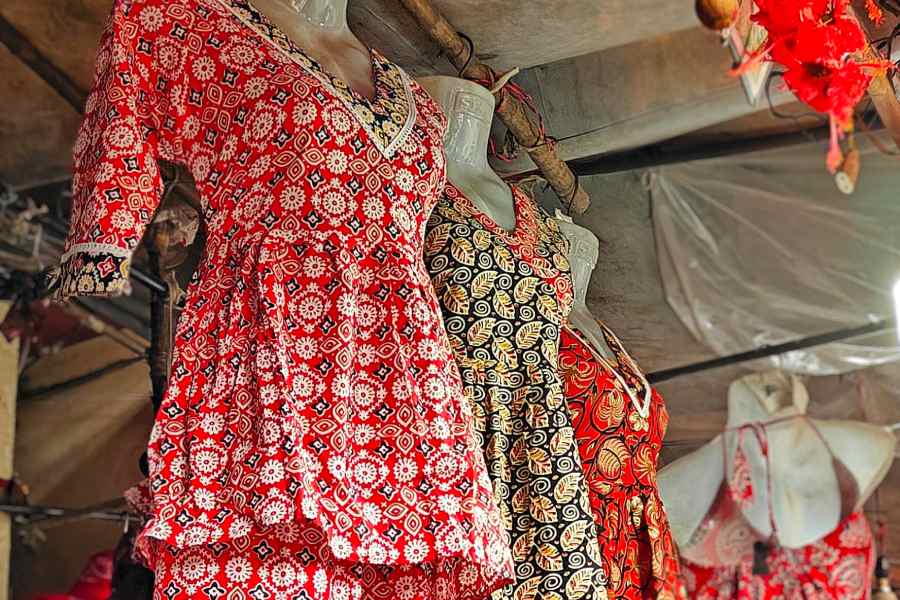
Soumyajit Dey
With popularity comes imitation — and Ajrakh and Kalamkari havn’t been spared. These art forms have crossed the boundaries of boutiques and artisans’ workshops and have taken a place on the pavement stalls of Gariahat, Esplanade and Hatibagan. But in the sea of authentic art forms, cheaper, machine-printed versions have made their way into the markets, often overshadowing the painstaking craftsmanship of the originals.
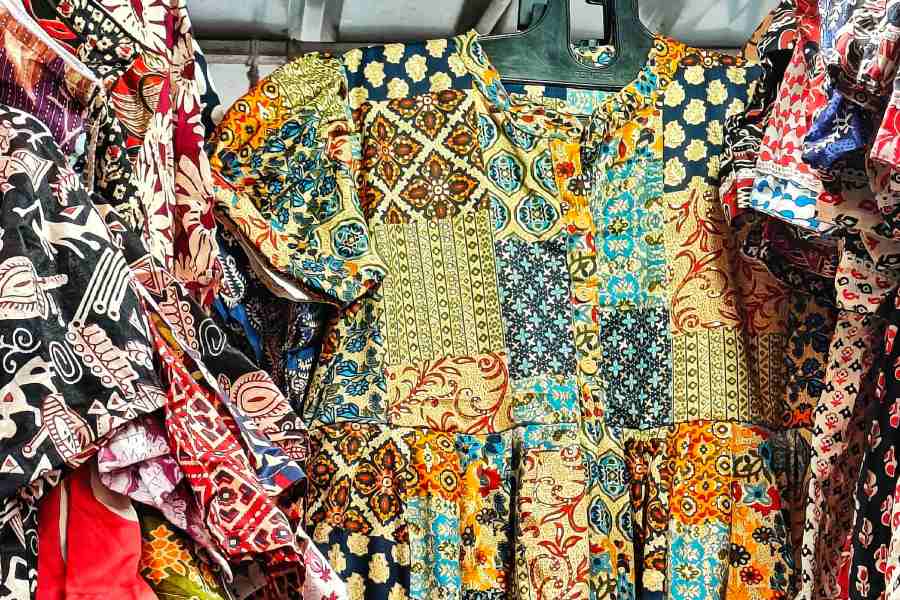
Soumyajit Dey
“It’s not a very easy craft. An original Kalamkari takes a month to finish. Ajrakh takes a long time to create. It’s not easily available, and it’s not that economically viable. So, there will be copies. But given the economy of our country, regular middle-class people can’t always afford a good Kalamkari or Ajrakh,” said Abhishek Roy.
However, Anushree Ghosh believes that originality can’t be replicated entirely. “Economically, it is beneficial for customers. But the fabric they use lacks authenticity,” she said.
